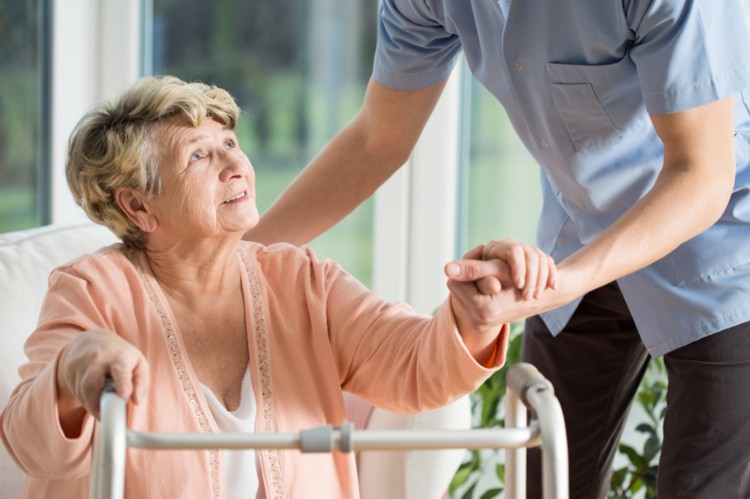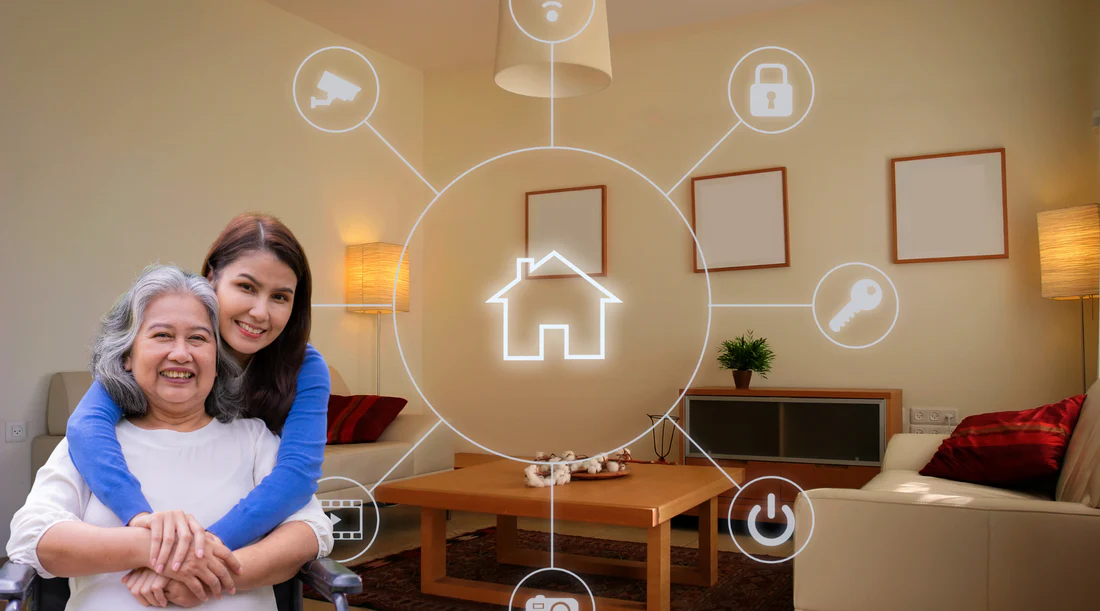Caring for elderly loved ones has always been a responsibility filled with love, but also concern. As people age, daily tasks can become more challenging, and safety risks—such as falls—become a serious reality. Traditionally, families relied on in-person caregivers or regular check-ins, but with today’s technology, smart elderly care solutions are revolutionizing how we support older adults.
From IoT devices to motion sensors, AI-powered health monitoring, and privacy-first home tech, these innovations make it easier for seniors to live independently while giving families peace of mind.
In this article, we’ll explore the best smart elderly care solutions available today, their benefits, and how they can create safer, more dignified living environments.
Why Smart Technology Matters in Elderly Care
Aging Population and Rising Needs

The global population of adults aged 65 and above is growing rapidly. With aging comes increased risks such as falls, chronic conditions, and reduced mobility. Families and caregivers are often stretched thin, making it harder to provide constant supervision.
Smart elderly care solutions fill this gap by ensuring 24/7 monitoring, fall detection, and real-time alerts—all without intrusive cameras or constant physical check-ins.
Balancing Safety and Independence
One of the biggest challenges in elderly care is finding the balance between safety and independence. Seniors want to feel capable and maintain their privacy, while families want reassurance that their loved ones are safe. Smart solutions achieve both.
Types of Smart Elderly Care Solution
1. Fall Detection Devices
Falls are one of the leading causes of injury among older adults. Traditional wearable devices often go unused because seniors forget to wear them or find them uncomfortable.
Modern solutions, like motion sensors or smart lights (such as Nobi or Motions devices), provide non-intrusive fall detection that doesn’t rely on wearables. These devices can immediately alert caregivers when a fall occurs, reducing response times dramatically.
2. Activity Monitoring Sensors
Smart sensors can track everyday activities like:
- Opening the refrigerator (checking if meals are taken).
- Bed entry/exit monitoring (tracking sleep patterns and possible nighttime falls).
- Movement around the house (ensuring regular activity throughout the day).
This data helps families and healthcare providers understand daily routines and spot irregularities that could indicate declining health or risks.
3. Health & Wellness Trackers
Smart health devices monitor vital signs such as:
- Blood pressure
- Heart rate
- Blood oxygen levels
- Glucose levels
These devices can sync with caregiver dashboards or mobile apps, ensuring that health concerns are detected early.
4. Voice-Activated Assistants
AI-powered assistants like Alexa, Google Home, and Apple’s Siri can be integrated into elderly care. They allow seniors to:
- Make emergency calls with a voice command.
- Control lights and home appliances.
- Set reminders for medication or appointments.
When combined with sensors, these assistants create a seamless, supportive environment.
5. Smart Lighting and Home Automation
Automatic lights that turn on when someone gets out of bed reduce fall risks at night. Home automation can also manage temperature, lock doors, or shut off appliances, adding another layer of safety.
Benefits of Smart Elderly Care Solutions
Safety Comes First
The most important benefit is immediate help in emergencies. From fall alerts to real-time monitoring, these devices drastically reduce the risks associated with delayed assistance.
Peace of Mind for Families
Families can’t always be physically present. With smart elderly care solutions, they gain reassurance that their loved ones are safe, active, and cared for.
Dignity and Independence for Seniors
Instead of relying on constant human supervision, seniors feel more empowered knowing that technology quietly supports their safety without intruding on their privacy.
Cost Savings Over Time
Smart solutions reduce the need for full-time caregiving staff or repeated hospital visits, ultimately saving families significant expenses.
Challenges and Considerations
Privacy Concerns
Not all seniors are comfortable with monitoring. Solutions that avoid cameras and only use movement sensors are becoming more popular for maintaining privacy.
Ease of Use
The best solutions are simple, requiring little to no setup. Seniors may not be tech-savvy, so devices should be intuitive and low-maintenance.
Affordability
Pricing can vary, but kits like Motions (6 devices plus a gateway for $199) are making smart elderly care more affordable and accessible.
Future of Elderly Care: Connected Living
As technology continues to evolve, the future of elderly care will rely heavily on AI-driven predictions, real-time data, and smart integrations. Imagine a home that not only detects a fall but also anticipates risks based on walking patterns, or one that reminds seniors of their daily routines in subtle, non-intrusive ways.
IoT devices, when combined with healthcare data, can give families and doctors insights that prevent accidents and improve long-term wellness.
Final Thoughts
Caring for elderly loved ones no longer has to mean choosing between independence and safety. With smart elderly care solutions, families can have both. These devices create a connected, safe, and dignified environment, offering peace of mind to families and freedom to seniors.
Whether it’s fall detection, activity monitoring, or simple daily reminders, the right technology can make aging at home not only possible but enjoyable.






